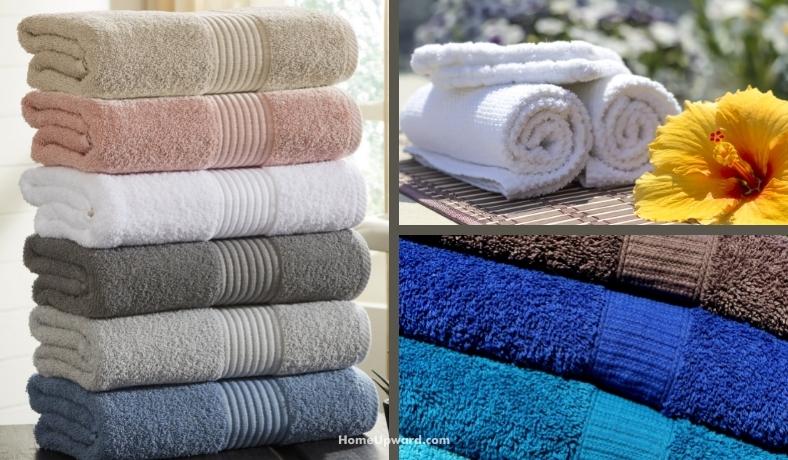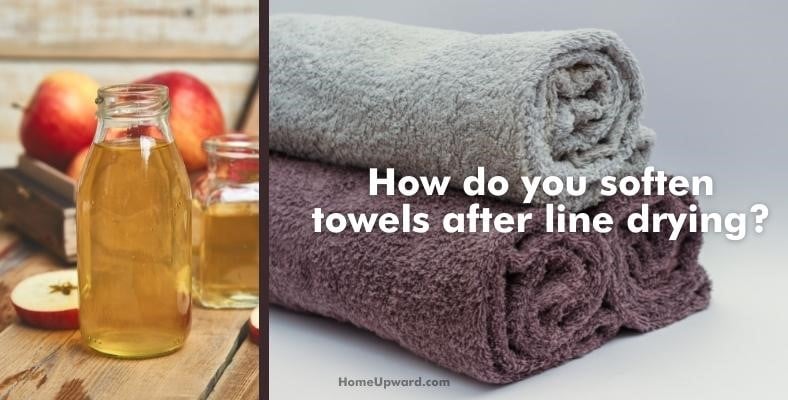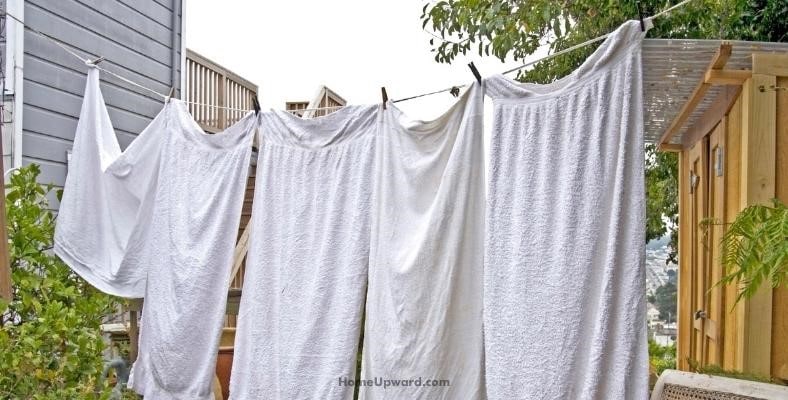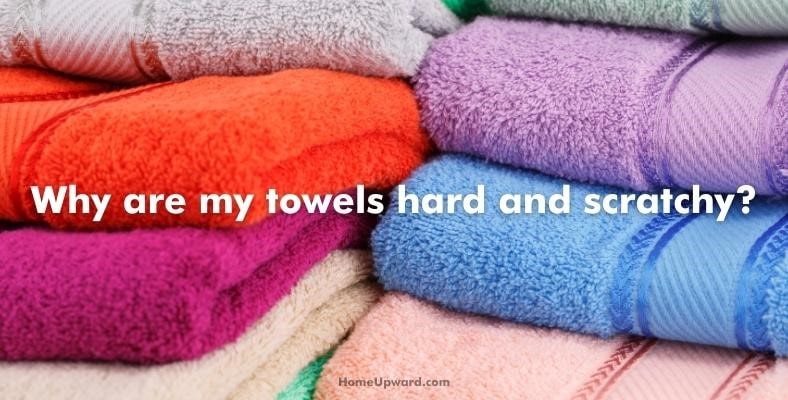Drying your towels is usually as easy as just tossing them into the dryer. But what if you don’t have one or want to try something else?
You’ve got plenty of other options as you find out here!
Contents
How to Dry Towels Without a Dryer (8 Great Options!)
Here are some of the most practical (and affordable!) ways to dry towels without a dryer.
1. Use a High Spin Setting on Your Washing Machine
How you wash your towels determines how well they dry. You want to use your washing machine to its full potential and help you reduce the dampness before going further.
Using the fastest spin cycle to wring as much water out of the towels as possible will make drying them easier.
For the best results, don’t overfill your washer. Give the towels plenty of room to spread out so the spin cycle removes as much water as possible.
2. Roll Wet Towels Tightly Inside Dry Towels
You’ll need an absorbent (preferably microfiber) towel for this. A good microfiber towel can absorb excess water from your spin-dried towels.
Line the towels up like two pieces of paper, and roll them up as tightly as possible, hamburger style. Once you have them rolled up wring them out like a wet washcloth.
3. Iron Each Wet Towel
This method requires good quality (but not too fancy) cotton or linen tea hand towels that you’ll cover the wet towel with for ironing.
Lay your wet towel out and layer the tea towel on top. Use your iron on the hot setting and completely iron both sides of the towel.
(Be sure not to apply your iron directly to the wet towel, as it can burn the fibers.)
4. Space Them Out Properly
Airflow is critical to the drying process especially when using non-dryer techniques. If you’re using an airer or drying rack make sure to give everything adequate space.
Stagger the towels like a checkerboard or leave a run empty between each set of towels. Or, if you’re only drying a few, spread them out over more than one rung to allow more airflow.
The same goes for using the clothesline. Give the edges space in between. Don’t let the towel get too bunched up beneath the clothespin.
5. Rotate Towels While Drying
Rotating your damp towels is as essential as airflow. It is especially important if you’re using a heat source like a wood stove or radiator heater.
Ideally, you want to be able to fold and put away your whole load of towels all together at once. Rotating them will help ensure they dry evenly and at approximately the same time.
6. Use a Hairdryer or Electric Fan
To hurry your wet laundry along, use a hairdryer on the towels. Even if you give them a good once over on both sides, it will help evaporate excess water and quicken the drying cycle.
For a more passive approach, place a self-rotating fan pointed towards your airer or drying rack. This will keep the air moving and shorten your drying time especially if you make sure to rotate and space properly.
7. Dry Using a Clothesline or Drying Rack
The classic clothesline is the most tried and true way to dry your towels without a dryer. Not only does it infuse your favorite linens with fresh air, but it tends to be quicker than hang-drying indoors.
You can get away without rotating your towels if you’re drying on a clothesline but don’t forget the airflow again. Depending on your rig, make sure to give the towels maximum surface exposure to dry quickly and don’t overlap them next to each other.
Drying racks are great for when the weather isn’t great for drying or leaving things outdoors. Place the rack near a heat source, open window, or in a sunroom for the best results.
8. Using an Oven on Low Heat
For a more luxurious experience, try drying your towels on very low heat in the oven. This works best for small hand towels and washcloths.
All you have to do is let your oven heat to a low temperature then turn it off before placing the towels inside. It can take up to about an hour, but if you’re in a pinch it will work just fine.
How Do You Soften Towels After Line Drying?
By far the most common complaint about line-dried towels is how stiff and scratchy they can turn out. The most common remedy for this complaint? Use white vinegar.
The list of uses for good ol’ white vinegar never seems to end. To encourage your towels to come out softer, include a vinegar rinse into your wash cycle.
Add half a cup of vinegar into the last rinse cycle to wash away laundry detergent residue that might stiffen fibers. Don’t worry – the vinegar smell should go away as it dries!
Why Do My Towels Go Hard When Dried?
Whether it’s hand towels, white towels, or colored towels, they all tend to get stiff after drying. There are a couple of reasons for this.
- Towels get stiff after natural drying because leftover residues and molecules can linger deep in the fibers, causing buildup.
- The way water changes as it dries on fibrous surfaces also causes stiffness. Essentially, the drying water molecule pulls the fibers tightly together, resulting in bunches rather than a fluffy surface.
How Do You Air Dry Towels Without Stiffness?
If you’ve tried a few methods to soften up your towels, they might need a deeper vinegar treatment if they just won’t soften up.
Making sure not to use too much laundry detergent in each load will help you combat buildup and the resulting stiffness.
Why Are My Towels Hard and Scratchy?
The simplest answer to this is wear and tear. Body oil, minerals from water, soaps, and household dirt and dust can all build up in fabric, causing an unpleasant clumpy texture.
How to Soften Towels Without a Tumble Dryer
Aside from airflow, movement can help soften your towels once they’ve had a good vinegar treatment. Shake them out before, during, and after drying.
Weather permitting, hang them on the clothesline on a nice, windy day without too much direct sun.
A few other tips for maintaining softness are to avoid harsh cleaners like bleach and explore different types of dryer balls. You can also use a lower washing temperature.






